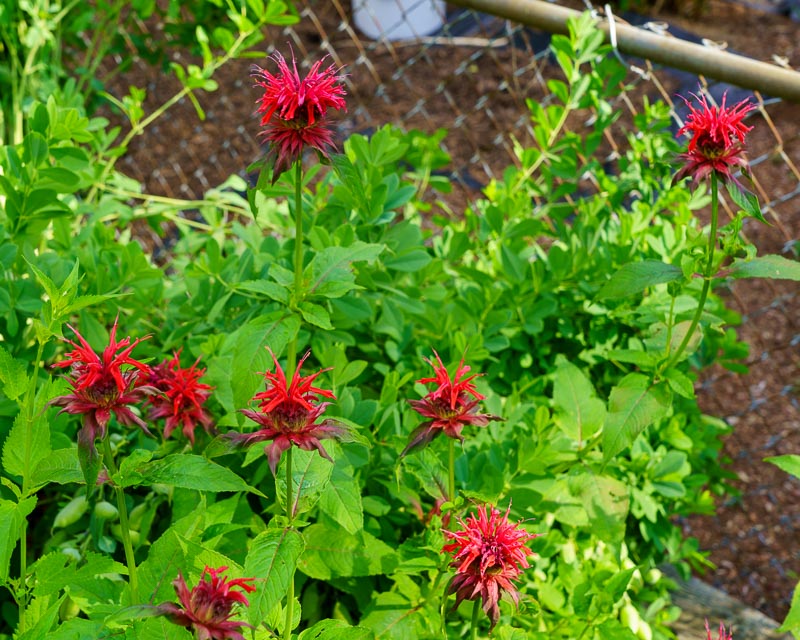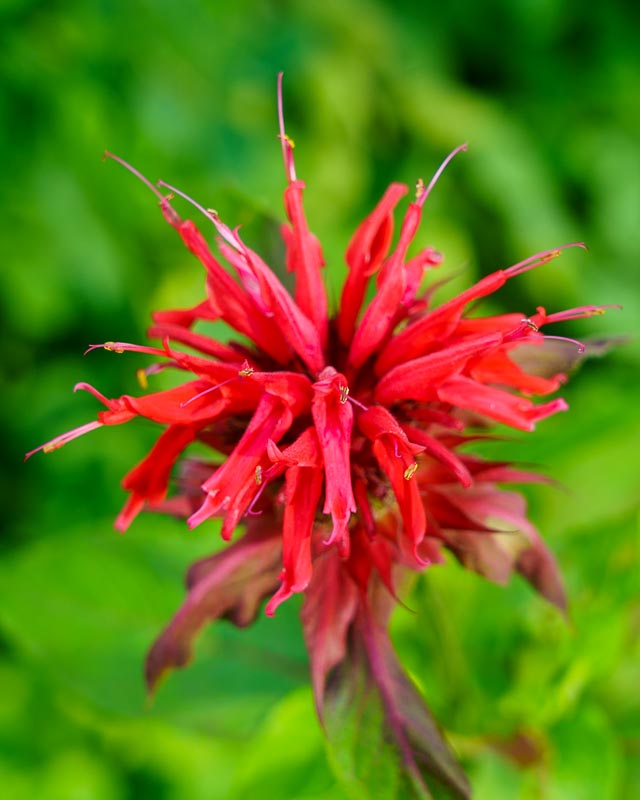Garden View Scarlet Bee Balm
Common Name:
Garden View Scarlet Bee Balm
Botanical Name:
Monarda 'Garden View Scarlet'
Mature Size:
40 - 45” tall, 30” wide
Sun Exposure:
Full Sun, Partial Shade
Soil Type:
Loamy, Moist but well-drained
Soil pH:
Acidic, Neutral
Flower Color:
Brilliant red
Care:
Bee balm is very easy to care for when provided with ideal growing conditions. These plants do best with loamy, moist soil, plenty of sunshine, and consistent water. Good airflow is important to avoid problems with powdery mildew, a common disease known to affect bee balm. Pests may include spider mites, aphids, and stalk borers.
Soil:
Bee balms thrive in moist, well-draining, fertile soil and benefit from rich, organic matter, such as compost. These plants do not do well in soggy or dry soils. If your garden conditions tend to be dry, try adding a layer of mulch to help retain the proper amount of moisture in the soil.
Water:
A regular watering schedule is best for these plants, especially during the first year of growth. Bee balms need evenly moist soil and won’t do well with overwatering or neglect. Water these plants once the soil just begins to feel dry. To prevent problems with powdery mildew, water at ground level and avoid getting the foliage wet.
Temperature and Humidity:
Bee balms are very hardy, handling very cold and very hot temperatures in USDA growing zones 3 to 9. However, these plants do not fare well in high humidity conditions, as this can increase the incidence of powdery mildew.
Fertilizer:
Provide rich, fertile soil for the best growth of bee balm plants. Amend the soil yearly with compost or other organic materials to give this plant the nutrients it needs. Alternatively, a well-balanced fertilizer can also be used yearly in the spring.
Pruning:
Light, yearly pruning can be done if you wish to keep this plant bushy. Simply pinch off the tips of the stems in the spring. Cut the bee balm down to a few inches in the fall to promote new growth in the spring. Heritage Plantation deadheads
Overwintering:
Bee balm is a very hardy perennial and requires no extra attention to keep it alive even through a cold winter.



